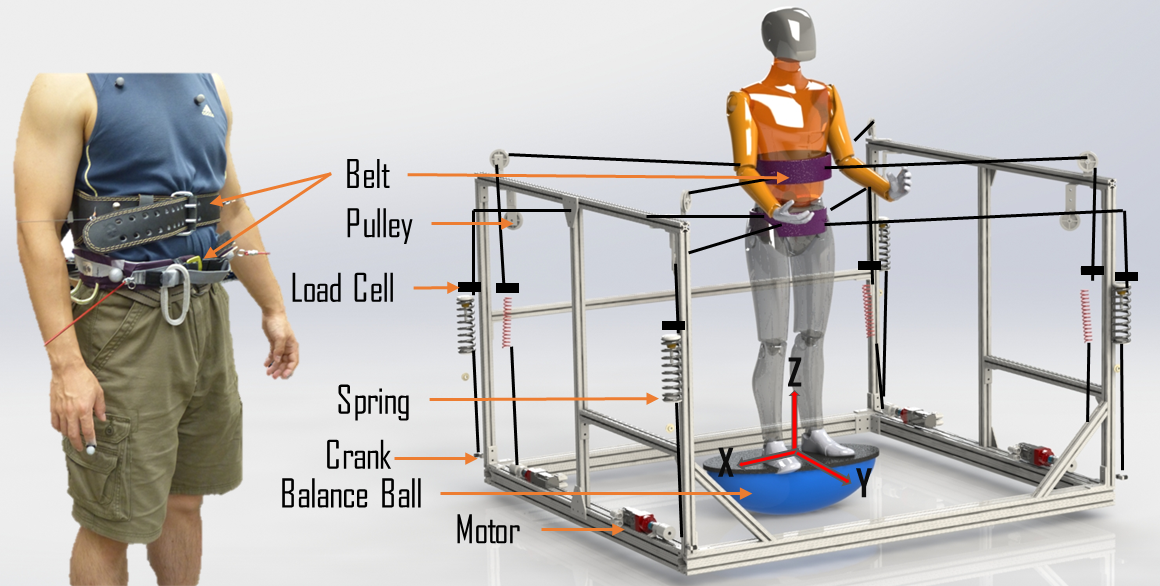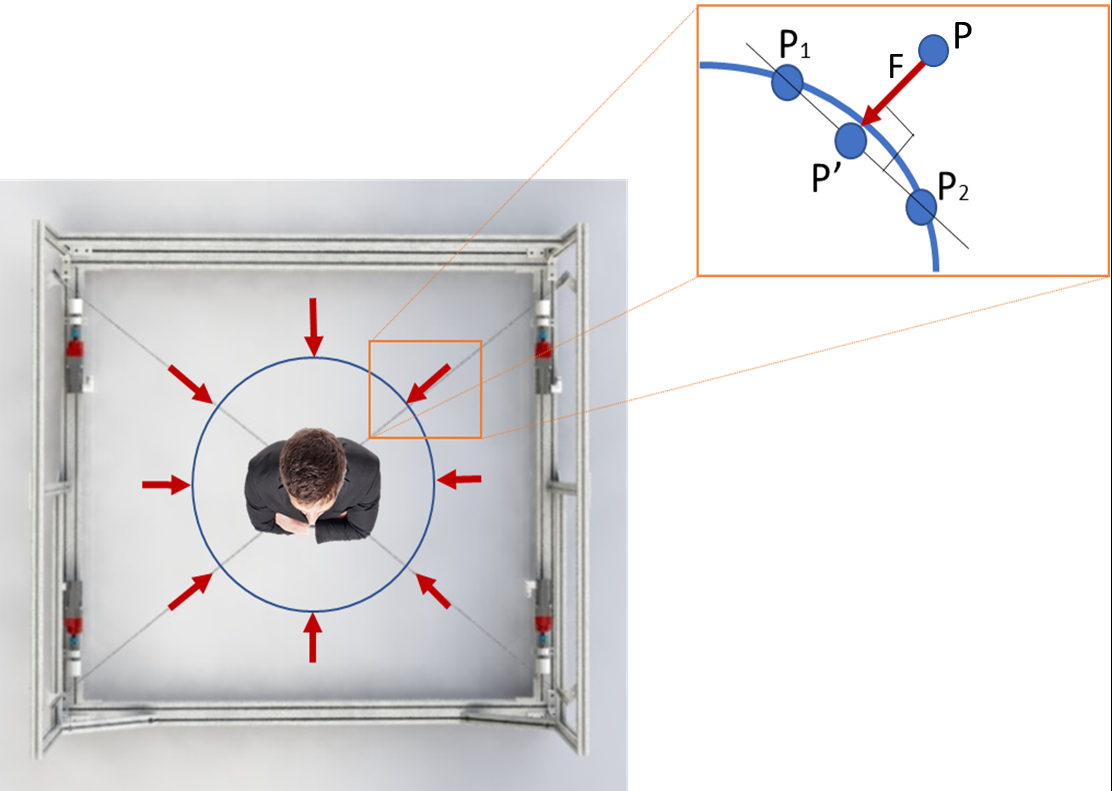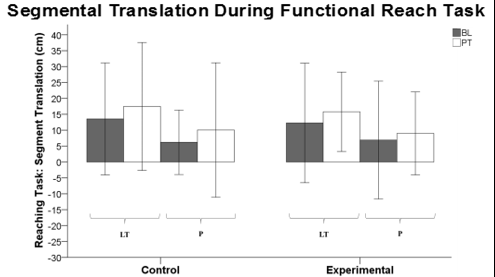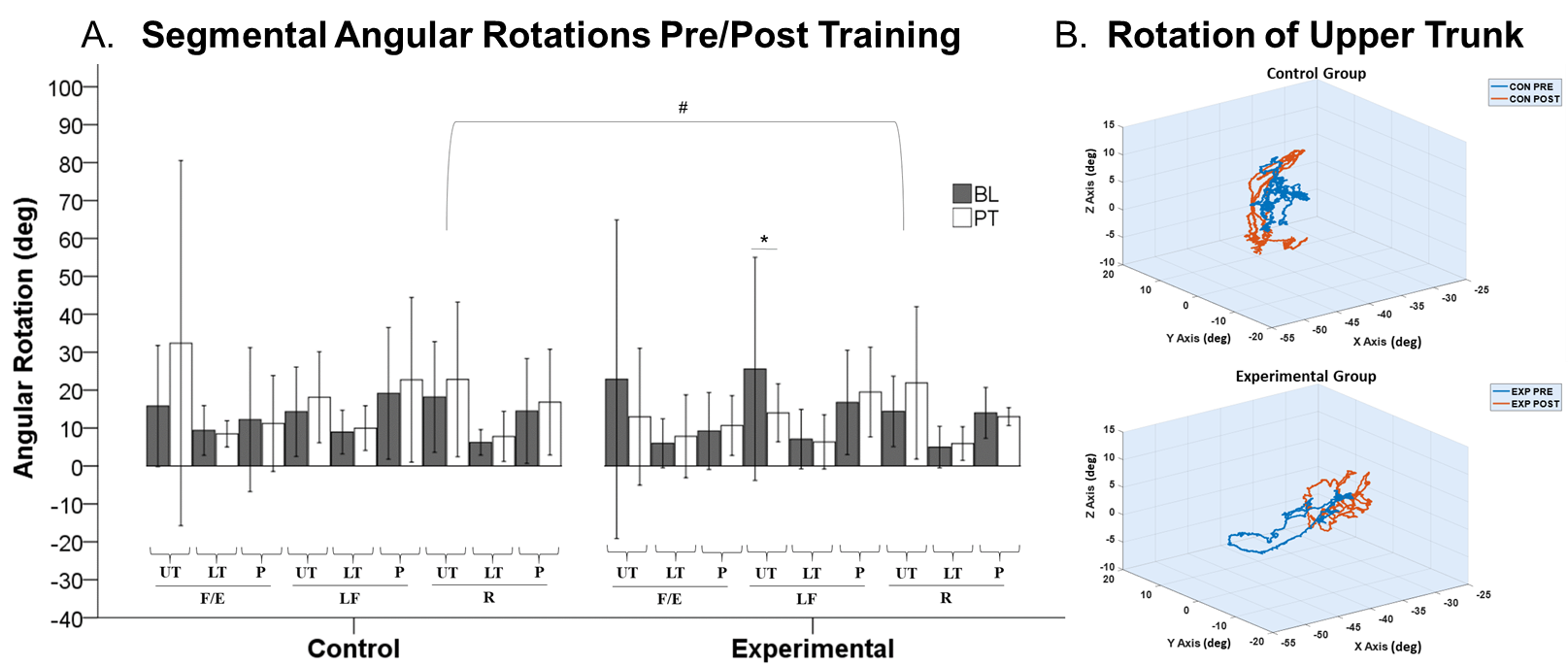Standing postural control requires a complex interaction between the sensory and motor systems. Among sensory inputs, proprioception plays a fundamental role in the fine control of postural movements. In some neuromotor disorders, defects in the proprioceptive system may be associated with unsteady, uncoordinated, and exacerbated upper body movements during activities of daily living that may secondarily result in imbalance, falls, and severe injuries. Passive or active proprioceptive interventions are implemented routinely as a part of rehabilitation programs that target postural balance disorders.
In this study, we have created a novel multimodal robotic platform merging both passive and active modalities to enhance upper body control. We hypothesize that the combination of passive resistance at pelvis in combination with active control of the lower thorax via assist-as-needed haptic feedback can enhance standing postural control. To test this hypothesis, we recruited ten healthy adults and had them perform dexterous reaching tasks either with or without a robotic system, while they are standing unstably on a balance ball. The results of our pilot study show that individuals can improve postural stability of the upper body by selectively reducing upper trunk motion relative to caudal segments in the direction of the reaching arm, after training with a cable robotic platform called TruST.




